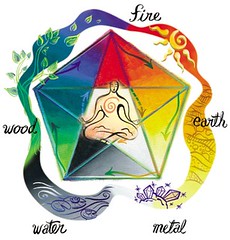Indian Feng Shui: Bringing Balance and Harmony to Your Life
Feng Shui is an ancient Chinese art that involves arranging objects, spaces, and energies in a way that promotes balance, harmony, and well-being in one's life. However, Feng Shui is not limited to China alone. Many other cultures, including India, have their own versions of the practice. Indian Feng Shui, also known as Vastu Shastra, can be traced back to the Vedic times and is believed to have a profound impact on one's mind, body, and soul. In this article, we will explore the principles of Indian Feng Shui and how they can be applied in our modern world.
Understanding the Basics of Indian Feng Shui
The term Vastu Shastra refers to the ancient Indian science of architecture and design. It is believed that every object, space, and element has a specific energy or life force, known as Prana. Indian Feng Shui aims to harness this energy and align it with the natural flow of the universe to create a harmonious and balanced environment.
The principles of Indian Feng Shui are based on several factors, including the directions, the five elements (earth, water, fire, air, and space), and the Vastu Purusha Mandala (a grid that maps out the energies of a specific space). The goal is to create a space that is in complete harmony with nature and the universe, promoting health, happiness, and prosperity.
Exploring the Five Elements of Indian Feng Shui
In Indian Feng Shui, the five elements play a crucial role in designing and arranging a space. Each element has a specific energy and is associated with different aspects of life.
Earth: Representing stability and grounding, the earth element is associated with the southwest direction. It is believed to promote stability, grounding, and fertility. To enhance the earth element in your space, you can add natural materials such as clay, stone, and crystals.
Water: Representing flow and abundance, the water element is associated with the northeast direction. It is believed to promote career success, wealth, and relationships. To enhance the water element in your space, you can add water features such as a fountain or aquarium.
Fire: Representing passion and energy, the fire element is associated with the southeast direction. It is believed to promote success, fame, and creativity. To enhance the fire element in your space, you can add candles, fireplaces, or bright colors.
Air: Representing movement and change, the air element is associated with the northwest direction. It is believed to promote mental clarity, flexibility, and adaptability. To enhance the air element in your space, you can add plants, wind chimes, and open windows.
Space: Representing emptiness and openness, the space element is associated with the center of the Vastu Purusha Mandala. It is believed to promote balance, peace, and harmony. To enhance the space element in your space, you can declutter, create open spaces, and use light colors.
Applying Indian Feng Shui in Your Home and Workplace
Now that we know the basics of Indian Feng Shui, let's explore how we can apply these principles in our homes and workplaces.
Directional Alignment: According to Indian Feng Shui, different directions have different energies, which can impact our lives. By aligning our spaces to the correct direction, we can benefit from these energies. For instance, placing the bed in the south direction is believed to promote relaxation, while placing it in the north direction is believed to promote prosperity and wealth.
Color Therapy: Colors have a significant impact on our moods, emotions, and behaviors. In Indian Feng Shui, colors are associated with specific elements and directions. For instance, using green in the east direction is believed to promote health, while using red in the south direction is believed to promote success.
Elemental Balancing: To create a harmonious space, it is essential to balance the five elements. You can achieve this by adding or removing elements based on their energy and association with specific directions.

Decluttering: Clutter is believed to disrupt the flow of energy in a space, causing stress and anxiety. By decluttering your space, you can promote a sense of calm and clarity.
Conclusion
Indian Feng Shui, also known as Vastu Shastra, is an ancient science that can help us create a harmonious and balanced environment. By aligning our spaces with the natural flow of the universe and balancing the five elements, we can promote health, happiness, and prosperity. Whether you are looking to redesign your home or workplace, Indian Feng Shui can provide you with valuable insights and principles that can help you create a space that supports your personal and professional growth.
